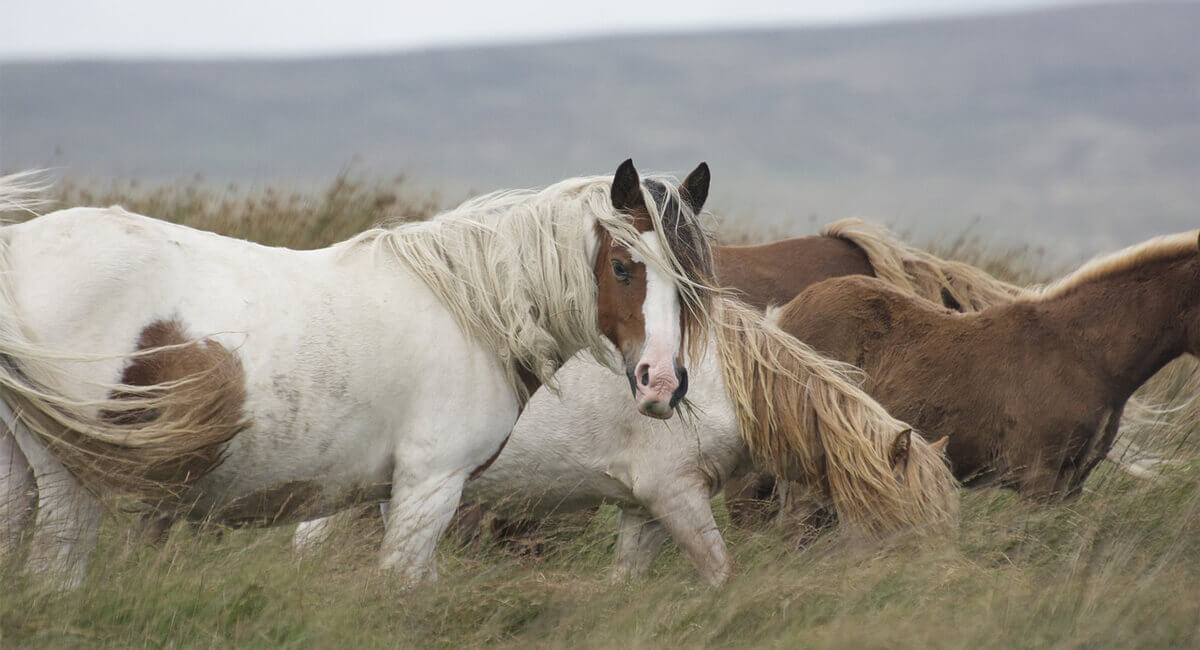American Wild Horse Conservation Criticizes PERC’s Analysis of BLM Adoption Incentive Initiative Program, Urges Vet Vouchers Over Cash
Washington, D.C., May 22, 2024 –Today, American Wild Horse Conservation (AWHC) expressed grave concerns over a report from the Property and Environment Research Center (PERC), which endorses the Bureau of Land Management’s (BLM) Adoption Incentive Program (AIP) and suggests increasing cash payments to increase adoptions of captured wild horses and burros.
AWHC points to a 2021 New York Times Exposé, which revealed the pitfalls of the AIP, such as thousands of wild horses and burros funneled into the slaughter pipeline.
“The cash component of the Adoption Incentive Program has placed thousands of horses and burros in danger of slaughter,” said Suzanne Roy, executive director of AWHC. “The BLM has a legal responsibility to ensure the humane treatment of these animals, and the current program falls woefully short of that mandate.
“We urge Congress to replace cash payments with vet vouchers that will remove system abuse and only benefit responsible adopters.”
The PERC report fails to present new or innovative findings, relying on historical BLM data. Further, it promotes the status quo of roundups and removals, dismissing scientific, affordable, and publicly acceptable wild horse conservation solutions.
AWHC identified over 2,100 BLM-branded animals in kill pens—just a fraction of the total, as most kill pens don’t publicly list these animals – during the same timeframe that the BLM has placed 15,000 wild horses and burros through the AIP.
The report’s recommendation to increase the cash incentives would amplify corruption within the program and place more of these federally protected animals at risk of slaughter. The solution, AWHC insists, is to take the cash out of the equation, not add more in.
AWHC supports a responsible adoption program that prioritizes the humane outcomes for adopted wild horses and burros. This includes offering more trained animals for adoption, expanding humane training programs, and, critically, removing cash incentives and replacing them with a non-cash vet voucher program to offset the initial care of adopted animals.
Further, the report states significant tax savings lie within the BLM’s off-range adoption programs, but with plans to round up over 20,000 wild horses and burros this fiscal year – adding to 64,000 already in holding – the BLM is removing more horses and burros than it can adopt out, at an unaffordable and escalating cost to the US taxpayer.
Removals of this scale perpetuate a cruel, and costly system that a 2013 National Academy of Sciences report called “expensive and unproductive” and has led to record numbers of animals held in tax-funded holding corrals and a proposed 2025 budget of $175 million.
The real savings opportunity, supported by Congress for over two years, is to be found on the range, where humane fertility control costs approximately $1500 per mare for lifetime treatment compared to $48,000 to round up, remove, and confine a horse for life. If the agency continues its counterproductive path, it could waste $1 billion of taxpayers’ money.
It is in the interests of taxpayers and wild horses for the agency to shift its focus to in-the-wild humane fertility control programs. A recent, peer-reviewed study affirmed the viability of such programs for large free-roaming equine populations who live in vast habitats.
The welfare crisis in the BLM’s holding system is dire, with an estimated over 80,000 horses and burros expected to be warehoused by the end of the year.
“Cash is the problem,” said Roy. “The only responsible solution to support adoptions and reduce system abuse is to remove the cash incentive and replace it with vet vouchers.”
###
Background
- AWHC has been investigating the consequences of the AIP since its inception. Its key findings include:
- Over 2,100 wild horses and burros were identified in kill pens in the time frame of the AIP.
- Numerous adopters have been identified on their second round and even third round of AIP adoptions despite disposing of their previously adopted animals in kill pens.
- AIP slaughter hotspots have been identified in Kansas, Oklahoma, and Texas, all within the jurisdiction of the BLM New Mexico State Office
- The influx of wild horses and burros into slaughter auctions as a result of the AIP has now exceeded the capacity of rescue organizations to take in the animals.
- AWHC filed a lawsuit against the BLM over its alleged illegal implementation of the AIP. The BLM failed to undergo a legally mandated National Environmental Policy Act (NEPA) process when implementing the AIP.

News from the horse industry. Sharing today’s information as it happens. The Colorado Horse Source is not responsible for the content of 3rd party submissions.

